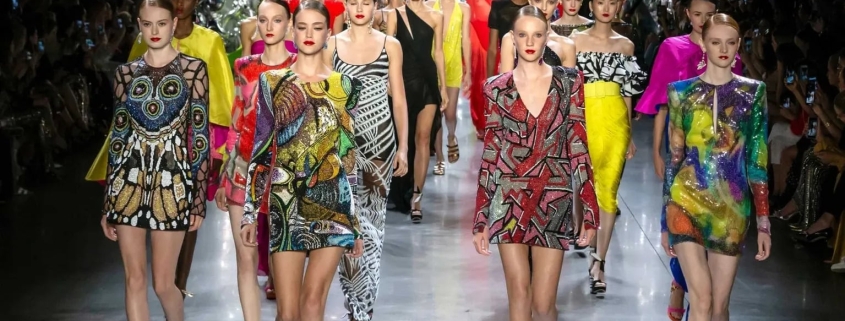What Is Diploma in Fashion Designing? Everything You Need to Know
Are you passionate about creating stunning outfits and exploring the world of fashion? If so, pursuing a career in fashion design might be your calling. But where do you start? A diploma in fashion designing could be the perfect stepping stone to turn your creative dreams into reality. But what is diploma in fashion designing, and how can it help you build a successful career in the fashion industry? In this comprehensive guide, we’ll explore everything you need to know about this exciting program, from course details to career prospects.
Fashion is an ever-evolving industry that thrives on creativity and innovation. If you’re someone who dreams of making a mark in the world of fashion, a diploma in fashion designing could be the right path for you. But what is diploma in fashion designing, and why is it so popular among aspiring designers? In this article, we’ll dive into the essentials of this program, including what it entails, its benefits, and how it can set you on the path to a rewarding career in fashion.
Have you ever wondered how designers create the breathtaking garments we see on runways and in stores? If you’re intrigued by the process, you might consider pursuing a diploma in fashion designing. But what is diploma in fashion designing, and how does it help aspiring designers hone their craft? This guide will walk you through the basics of this program, shedding light on the skills you’ll learn, the career opportunities it opens up, and why it’s a great choice for creative individuals.
The fashion industry is a dynamic field that offers endless opportunities for creative minds. If you’re looking to break into this exciting world, understanding what is diploma in fashion designing is essential. This specialized program provides the perfect blend of theoretical knowledge and practical skills to help you build a solid foundation in fashion design. In this article, we’ll explore the details of this course, the skills it imparts, and how it can pave the way for a thriving career in fashion.
For anyone with a flair for style and a passion for creativity, a career in fashion design can be incredibly fulfilling. But how do you get started? A great first step is earning a diploma in fashion designing. So, what is diploma in fashion designing, and why is it a popular choice among aspiring designers? This article will answer all your questions, from the course structure to the career opportunities it unlocks, giving you a complete understanding of this exciting program.
What Is a Diploma in Fashion Designing?
A Diploma in Fashion Designing is a specialized educational program designed to equip students with the skills, knowledge, and creative acumen needed to thrive in the fashion industry. It is a short to medium-term course, typically lasting between six months to two years, depending on the institution and curriculum. The program focuses on both the artistic and technical aspects of fashion design, blending theory with practical training to help students create original and functional designs that resonate with industry standards.
The curriculum of a diploma in fashion designing is tailored to cover key areas such as textile science, pattern making, garment construction, fashion illustration, and design principles. Students also learn about fashion history, current trends, and market dynamics, which are essential for understanding the ever-evolving nature of the industry. This combination of creative and technical training prepares graduates to adapt to diverse roles in the fashion world, from designing bespoke collections to working in retail or manufacturing.
One of the primary advantages of a diploma in fashion designing is its accessibility. Unlike degree programs, which often require a longer commitment and higher fees, diplomas are more flexible and affordable. This makes them an excellent option for students who wish to enter the fashion industry quickly or those looking to enhance their skills without pursuing a full degree. Additionally, the hands-on nature of the program allows students to build a professional portfolio, a critical asset when seeking employment or freelance opportunities.
The diploma program is ideal for individuals who have a passion for creativity and a keen interest in clothing, accessories, and aesthetics. Whether you’re a recent high school graduate, a working professional looking to switch careers, or someone with a natural flair for design, this course can provide a solid foundation for building a career in fashion. Many programs also offer internships or industry projects, enabling students to gain real-world experience and network with industry professionals.
In conclusion, a Diploma in Fashion Designing is a comprehensive and practical course that opens doors to numerous career opportunities in the fashion industry. It serves as a stepping stone for aspiring designers, giving them the tools they need to turn their passion into a profession. With the growing demand for innovative designs and sustainable practices in fashion, earning a diploma in this field can be an excellent investment in your creative future.
Why Choose a Diploma in Fashion Designing?
Choosing a Diploma in Fashion Designing offers a unique blend of creativity, skill development, and industry relevance, making it an ideal choice for aspiring fashion professionals. This program provides focused and practical training in essential aspects of fashion, such as design principles, textile knowledge, garment construction, and trend forecasting. Unlike a traditional degree, a diploma program is often shorter and more affordable, allowing students to enter the workforce faster. For individuals looking to quickly build a career in the competitive fashion industry or add specialized skills to their portfolio, a diploma provides a clear and efficient pathway.
Additionally, a diploma program often includes hands-on projects, internships, and real-world assignments that prepare students for industry challenges. The exposure to practical work enables students to build a professional portfolio, a critical asset when seeking jobs or freelance opportunities. Furthermore, the flexibility of diploma courses—offered both online and offline—makes it accessible to a diverse group of learners, including those who wish to balance their studies with work or other commitments. Whether you’re starting fresh or looking to upskill, a diploma in fashion designing equips you with the tools and confidence to pursue a fulfilling and creative career in the dynamic world of fashion.
Core Subjects and Skills Covered
A Diploma in Fashion Designing covers a comprehensive range of subjects that equip students with the creative and technical expertise needed for the fashion industry. Key topics often include fashion illustration, where students learn to sketch and conceptualize their designs; textile science, which focuses on the properties of different fabrics and materials; and garment construction, which involves pattern-making, sewing, and assembling clothing. Students are also introduced to fashion history, helping them understand the evolution of trends and styles, and fashion marketing, which teaches them how to position their designs in a competitive market. These core subjects ensure a well-rounded education that combines artistry with practical application.
In addition to subject knowledge, students develop essential skills that prepare them for the fast-paced fashion industry. Creativity and innovation are nurtured as students learn to design unique and trend-forward collections. Technical skills such as draping, pattern drafting, and computer-aided design (CAD) are emphasized to meet modern industry standards. Students also acquire soft skills like communication, teamwork, and time management, which are vital for working in collaborative environments or managing freelance projects. By the end of the course, graduates are well-equipped to take on diverse roles, from designing and merchandising to marketing and production in the global fashion industry.



Leave a Reply
Want to join the discussion?Feel free to contribute!